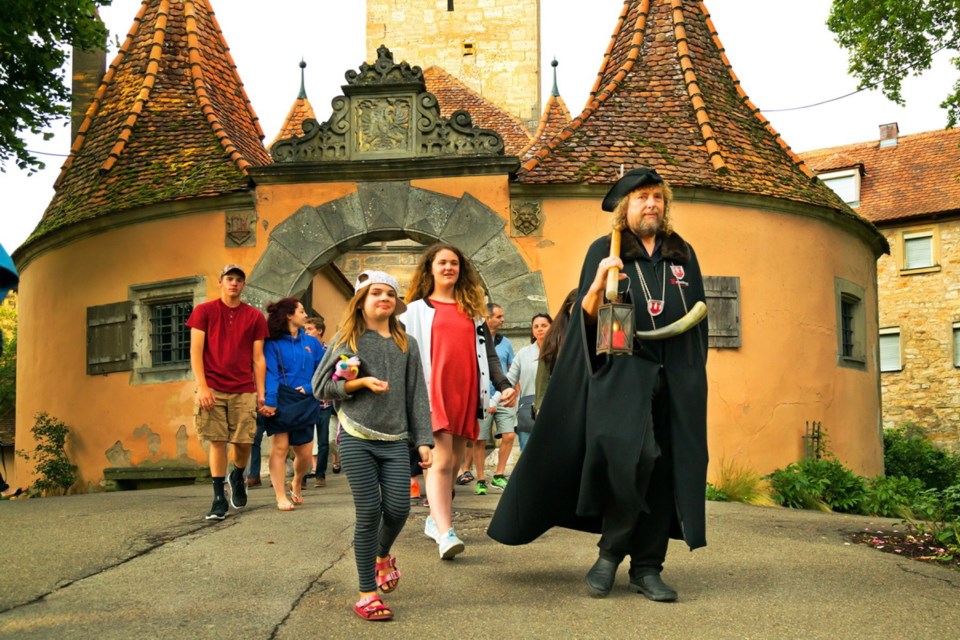When I arrive in a new city, I book a private guide straightaway — someone who can bring the city’s architecture, history and culture to life. Lately, in the spirit of experiential sightseeing, I’ve been taking specialized tours that highlight unique, local experiences or historical themes. Particularly in big cities, I’ve found all kinds of focused tours, from guided night walks to musical pub crawls.
One of the most popular sightseeing trends is food tours, which reward travellers with a full meal, a local’s insights and edible memories. For about $100 US, you can eat your way through a few neighbourhoods in a few hours, while an expert explains the history and tradition behind each dish.
Depending on the cuisine, tours might be centred around a series of informal stand-up gourmet-snack stops, or several more formal dining experiences.
Unsurprisingly, my latest food tour in Paris was a delicious mix of culinary enlightenment and carbs. My guide taught me how to scrutinize and savour baguettes, croissants and cheese, and how to appreciate the French as expert eaters.
More adventurous foodies should seek out food tours in unlikelier places. For example, Poland’s bigger cities — particularly Warsaw — offer fascinating and flavourful food tours with a focus on vodka, fermenting techniques (for dishes such as borscht) and hardy stews that originated in the country’s peasant past. These tours provide perspective on how food affects culture, and vice versa.
To work off the food-tour calories, consider a bike tour. Some cities lend themselves well to cycling — and flat Copenhagen is the best. You’ll get to know the lay of the land efficiently, accompanied by a fun and opinionated Dane, and you’ll likely stumble upon charming corners of the Danish capital that many travellers miss. You also get a sense for local daily life, as many Danes regularly commute by bike, and stop at a few important sights (my tour finished at that must-see lady on the rock, the Little Mermaid statue).
If hard-hitting history is more to your liking, it’s well worth spending an afternoon on a tour led by academics with a passion for a specific historical era, political figure or artistic movement. In Barcelona, I like historian and author Nick Lloyd’s deep dive into the Spanish Civil War. Both he and his partner are enthusiastic teachers, taking small groups on highly regarded walks through the Old Town to explain the war’s social context and significance in Barcelona.
Context in artwork is also much easier to absorb with a guide at your side. During my latest visit to the Rijksmuseum in Amsterdam, I was inspired by the local art historian who led my tour. I was better able to appreciate Johannes Vermeer’s 17th-century “intimate genre” paintings, which focus on domestic interiors — unique in a time when artists were normally supported by lofty patrons.
During the Dutch Golden Age of the 1600s, trading ships roamed the globe and made Amsterdam wealthy. No longer ruled by the Habsburg king or obedient to the pope, the Dutch were a Protestant republic — fiercely independent and proud. Even without relying on the typical nobles, kings and Catholic Church as patrons, Dutch artists did just fine.
For a fresh perspective on daytime sightseeing, try a night walk. One of my favourites is Rothenburg’s Night Watchman tour — it’s flat-out the most entertaining hour of medieval wonder anywhere in Germany.
The tour is as funny as it is informative, and “watchman” Georg, who for years has led visitors on this walk every night, manages to keep his jokes as fresh as if he’s just coming up with them for the first time. And as much as I enjoy hearing the Night Watchman’s stories yet again, it’s even more delightful to watch the enthralled faces of his younger audience members, eyes wide like those of any traveller open to embracing new experiences.
Ghost walks are also popular in many cities with an old-timey core, and provide local lore and colour.
While many have a well-earned reputation for being too silly to be worthwhile, I do enjoy the ones in York. On any given night, costumed characters bring out the dark side of the medieval centre’s atmospherically narrow lanes. Some tours are more historically based; others are more like street theatre than a walking tour — but all tell engaging tales of history, violence and mayhem.
And in Dublin, I like to spend an evening on a musical pub crawl, getting a (literal) taste of local culture. A few Dublin musicians meet each group in a pub and, over the course of the evening (and several pints of beer), lead you through three pubs. Along the way, they let you in on the back stories behind Ireland’s musical traditions in a way that will deepen your appreciation for Irish tunes far into the future.
There’s a tour for practically every curiosity and attention span. Pick your topic, take advantage of local expertise and enjoy Europe’s most intimate cultural experiences.
Rick Steves (ricksteves.com) writes European travel guidebooks and hosts travel shows on public television and public radio. Email him at rick@ricksteves.com and follow his blog on Facebook.



